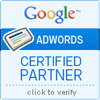You may have noticed the animation on www.overture.com that says, “Overture delivers ROI daily.” Notice that they do not specify whether they are delivering a positive ROI (return on investment) or a negative ROI! Unfortunately, you will have to make those calculations yourself.
Knowing how much you can afford to spend on each visitor, will help you to use your marketing dollars more effectively. First however, let’s focus on the nuts and bolts of the marketing plan to sell your products and services online.
CPC
CPC stands for Cost per Click-through. Many marketing options involve paying a fee for each visitor who is brought to your site. Overture is a perfect example. (See our past article on Overture).
Overture sets a minimum bid of $0.05 per click-through, so to use this service, you should at least be able to spend this amount per visitor to your site, and still make a profit. Since your competitors also want a higher position in results for the same keyphrase as you, the bids escalate, and in some cases, companies end up paying over $10 per click-through! Many companies are getting caught up in the challenge of keeping the top positions, and may even be losing money on these bids in order to be the market leaders. In these cases Overture is the only winner.
Another factor in the bidding wars is that search engines such as Yahoo, MSN, and AltaVista display the top three Overture results, therefore making these positions even more sought after. Paying click-through fees that are above your estimated profit margin is a dangerous practice because your competitors may be able to keep beating you until you run out of money! Is it worth it playing chicken with a company that may have much deeper pockets than you do? It is a good idea to figure out how much you are willing to spend per sale, and then to figure out your sales-per-visitor ratio. This will help you to find out how much you should spend per visitor. Avoid spending any more than that amount.
SEO
SEO stands for Search Engine Optimization. It is often a better investment to pay for search engine optimization and submissions, than to pay click-through fees. As CPC bids escalate, the long-term benefit of SEO becomes more evident. An SEO campaign increases your position in the search engines to generate more traffic. Although you will have to pay to optimize your site, you will not have to pay a forever increasing click-through fee. Rather than paying by the visitor, you are investing in a long-term strategy to bring in a steady stream of customers. You may find after some experimentation that a combination of both CPC and SEO services works best for your needs.
Sales per visitor
The sales-per-visitor ratio is a crucial number to monitor and improve for a higher ROI. For example, if you make one sale on your site out of 100 unique visitors to your site, then you have 1% sales-per-visitor ratio (depending on your industry this could be average). A higher sales-per-visitor ratio is more desirable because you will make more sales for the same amount of visitors. This may allow you to increase your marketing budget and to achieve an even higher volume of sales. Even if you do not raise your marketing budget, an increase in your sales-per-visitor ratio will leave you with a higher ROI.
Steps to increase your sales-per-visitor ratio
- Improve the quality of your traffic
- Improve your site’s usability to keep visitors on the site
- Improve your perceived credibility to increase customer confidence
- Improve or simplify your ordering process to reduce shopping cart abandonment
Increased marketing budget to get more volume
If you pay for visitors by the click, and after working on these steps your sales-per-visitor ratio increases from 1% to 3%, then you will be able to increase your bids because you will be making more sales. For example, if you pay $0.10 per visitor (CPC) and make $15 per sale (after other expenses), then with a 1% sales ratio you end up with a $50 profit for 1000 visitors (see breakdown below).
| Sales-per-visitor ratio of 1% |
1% of 1000 visitors
10 sales
$15 time 10 sales
$150 profit before CPC
– $100.00 CPC cost: ($0.10 X 1000)
$50 total profit |
If you increase your ratio to 3% your profits go from $50 to $250 for the same amount of visitors! At this point you may consider raising your bid to $0.15, which may in fact raise your volume enough to increase your overall profit.
| Sales-per-visitor ratio of 3% |
3% of 1000 visitors
30 sales
$15 time 30 sales
$450 profit before CPC
– $200.00 CPC cost ($0.10 X 1000)
$250 total profit |
Key to success
Depending on your goals, you may choose to increase your profit per unit or your volume, in order to make more money. Either way, you must first understand the relationships between CPC, sales-per-visitor, and profit. An increased sales-per-visitor ratio is the best way to take advantage of increased visitors because it will turn more of those visitors into buyers.
Jason Campbell
Jason Campbell is the co-founder and President at Red Carpet Web Promotion, Inc.

